|
Cleaning up Former Methamphetamine Labs
Guidelines
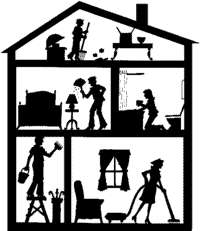 The methamphetamine (meth) lab problem is growing. Meth labs, used to make
the illegal drug methamphetamine, are discovered in houses, apartments, motel rooms,
sheds, or even motor vehicles. In 1998, federal, state and local authorities were involved
in the seizure of more than 500 labs in Missouri alone, and the number of meth labs seized
by law enforcement agencies increases each year. The methamphetamine (meth) lab problem is growing. Meth labs, used to make
the illegal drug methamphetamine, are discovered in houses, apartments, motel rooms,
sheds, or even motor vehicles. In 1998, federal, state and local authorities were involved
in the seizure of more than 500 labs in Missouri alone, and the number of meth labs seized
by law enforcement agencies increases each year.
As the problem grows, and agencies seek to restrict the products
needed to make methamphetamine, the methods and the locations of its production are
changing. This adds to the difficulty health and environmental agencies face in assessing
meth related health risks.
Washington (State) requires owners to make sure that there are no
more than five micrograms of meth residue per square foot in a house. In Oregon, the level
is 0.5 micrograms. "If you think about it, there's really no other choice," said
Duncan Gilroy, a toxicologist for the Oregon Health Department. "If you're ignorant,
you're cautious."
Oregon also takes steps to warn prospective buyers or tenants about contaminated
residences. It puts drug labs on a special list, and information about the possible
hazards is added to the property title.
The Missouri Department of Health's (MDOH) Section for Environmental
Public Health has created these basic guidelines to assist property owners and the general
public in cleaning up former meth lab properties. |
|
How can you find out if a property has been used to make meth?
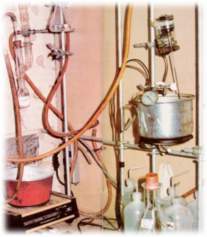 Currently, there is no comprehensive method for tracking or listing homes
that were used as meth labs. MDOH is creating a list of reported addresses. Your local
health department can verify if the property in on that list. You should call your local
law enforcement agency to confirm that a seizure of chemicals took place on the property,
and to obtain the name of any hazardous materials contractor who may have removed
materials. The contractor should have information on what chemicals were present on the
property. Additional information may be obtained from your county health department, fire
department, or the owner of the property. Currently, there is no comprehensive method for tracking or listing homes
that were used as meth labs. MDOH is creating a list of reported addresses. Your local
health department can verify if the property in on that list. You should call your local
law enforcement agency to confirm that a seizure of chemicals took place on the property,
and to obtain the name of any hazardous materials contractor who may have removed
materials. The contractor should have information on what chemicals were present on the
property. Additional information may be obtained from your county health department, fire
department, or the owner of the property.
Why the concern about cleaning up illegal meth labs?
Properties used to produce meth will usually be found with a
lab-like setting; including containers of chemicals, heat sources, and various types of
lab equipment. Typically, after a lab is discovered by law enforcement, the bulk of any
lab-related debris, such as chemicals and containers, is removed. However, it is possible
a small amount of contamination is left on surfaces and in absorbent materials (carpets,
furniture), sinks, drains and ventilation systems. Though found in small amounts, meth lab
contaminants may pose health threats to persons exposed to them.
List of ingredients, chemicals,
and equipment used in a meth lab
What are the meth lab contaminants?
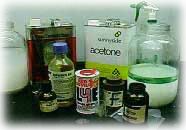 The Environmental Protection Agency (EPA), working with MDOH, is seeking to
identify contaminants found at former meth lab properties throughout Missouri. There are
different "recipes" for making meth, each using different ingredients. The
making of meth can also be performed in different stages at different locations. EPA has
collected samples from houses, apartments, trailers, motels, and other properties after
meth labs were seized. EPA concentrated its sampling efforts on areas to which a resident
would most likely come in contact with contamination, such as a property's surfaces and
indoor air - but EPA also took samples from containers, soil, drains, filters, vents, etc. The Environmental Protection Agency (EPA), working with MDOH, is seeking to
identify contaminants found at former meth lab properties throughout Missouri. There are
different "recipes" for making meth, each using different ingredients. The
making of meth can also be performed in different stages at different locations. EPA has
collected samples from houses, apartments, trailers, motels, and other properties after
meth labs were seized. EPA concentrated its sampling efforts on areas to which a resident
would most likely come in contact with contamination, such as a property's surfaces and
indoor air - but EPA also took samples from containers, soil, drains, filters, vents, etc.
MDOH has examined sampling results and found many chemicals, not
related to meth labs, that can be found in most homes. The more common household chemicals
can be found in carpet, household cleaners and paints. These chemicals include; benzene,
methylene chloride, trichloroethane, and toluene. It is suspected that meth-related
chemicals include solvents, phosphorous, iodine, and metals.
What are possible health effects from exposure to meth lab
contaminants?
Many of the contaminants present during meth's cooking process can
be harmful if someone is exposed to them. These contaminants can cause health problems
including respiratory (breathing) problems, skin and eye irritation, headaches, nausea and
dizziness. Acute (short-term) exposures to high concentrations of some of these chemicals,
such as those law enforcement officers face when they first enter a lab, can cause severe
health problems including lung damage and burns to different parts of the body.
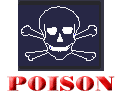 There is little known about the health effects from chronic (long-term)
exposure to contaminants left behind after a meth lab is dismantled. Until the
contaminants have been identified, their quantities measured, and their health effects
known, MDOH advises property owners to exercise caution and use the safest possible
cleaning practices in dealing with a former meth lab property and any possible remaining
contamination. There is little known about the health effects from chronic (long-term)
exposure to contaminants left behind after a meth lab is dismantled. Until the
contaminants have been identified, their quantities measured, and their health effects
known, MDOH advises property owners to exercise caution and use the safest possible
cleaning practices in dealing with a former meth lab property and any possible remaining
contamination.
The potential health effects depend on
- the specific chemicals to which a person is exposed
- how much of each chemical to which a person is exposed,
- how long a person is exposed, and
- the health condition of the person being exposed.
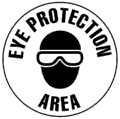 Exposure to meth residues may cause symptoms similar to those experienced by
meth users. Exposure to meth residues may cause symptoms similar to those experienced by
meth users.
Exposure to volatile organic compounds (VOCs) may cause symptoms
such as nose and throat irritation, headaches, dizziness, nausea, vomiting, confusion and
breathing difficulties. Benzene is a VOC known to cause cancer.
Acids or bases will cause a burning sensation on the skin and in
mucous membranes, and can cause severe eye damage. Exposure to metals and salts can cause
a wide range of health effects including respiratory irritation, decreased mental
function, anemia, kidney damage and birth defects.2
How can the property be cleaned up?
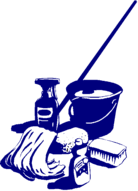 Since this is an emerging problem, there is currently no
official guidance or regulations on how to clean up a former meth lab property for
reoccupation. MDOH is working to find an answer that will protect the public and be
practical for property owners. Responses across the country to the cleanup of these
properties have ranged from doing nothing to complete demolition. Until a cleanup standard
is Since this is an emerging problem, there is currently no
official guidance or regulations on how to clean up a former meth lab property for
reoccupation. MDOH is working to find an answer that will protect the public and be
practical for property owners. Responses across the country to the cleanup of these
properties have ranged from doing nothing to complete demolition. Until a cleanup standard
is 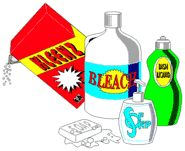 determined, MDOH advises owners to do their best to thoroughly clean up these
properties. determined, MDOH advises owners to do their best to thoroughly clean up these
properties.
MDOH believes the safest way to clean up a former meth lab is to hire
environmental companies trained in hazardous substance removal and clean-up. Owners who
clean their own properties should be aware that household building materials and furniture
can absorb contaminants and give off fumes. Use caution and wear clothing to protect your
skin, such as gloves, long sleeves, and eye protection during cleaning.
Some general guidelines include:
• Air out the property
After a lab is seized by law enforcement officials, professionals
trained to handle hazardous materials are generally called in to remove lab waste and any
bulk chemicals. During this removal, every effort is made to air out the property for the
safety of the removal crew. For security reasons, the property is usually closed upon
their departure. However, this short-term airing-out may not be sufficient to clear out
all the contaminants from the air inside the home. Be sure the property has been aired out
for several days before cleaning. After the initial airing out, good
ventilation should be continued throughout the property's cleanup.
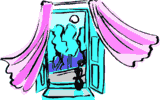 To promote the volatilization (dissolving into the air) of some types of
chemicals, windows and doors may be closed and the temperature inside the home increased
to approximately 90 degrees Fahrenheit for a few days. After cleaning and heating is
complete, the property should be aired out for three to five days to allow for any
volatiles to disperse from the house. Open all the building's windows and set up exhaust
fans to circulate air out of the house. During this time, the property should remain off
limits unless it is necessary to make short visits to the property. To promote the volatilization (dissolving into the air) of some types of
chemicals, windows and doors may be closed and the temperature inside the home increased
to approximately 90 degrees Fahrenheit for a few days. After cleaning and heating is
complete, the property should be aired out for three to five days to allow for any
volatiles to disperse from the house. Open all the building's windows and set up exhaust
fans to circulate air out of the house. During this time, the property should remain off
limits unless it is necessary to make short visits to the property.
After the cleaning and final three to five days of airing-out, the
property should be checked for re-staining and odors, which would indicate that the
initial cleaning was not successful, and further, more extensive steps should be taken.
• Contamination removal and disposal
 During the meth cooking process, vapors are given off that
can spread and be absorbed by nearby materials. Spilled chemicals, supplies and equipment
can further contaminate non-lab items. It is a good idea to remove unnecessary items from
the property and dispose of them properly. Items that are visibly contaminated should be
removed from the property and may be disposed of in a local landfill. During the meth cooking process, vapors are given off that
can spread and be absorbed by nearby materials. Spilled chemicals, supplies and equipment
can further contaminate non-lab items. It is a good idea to remove unnecessary items from
the property and dispose of them properly. Items that are visibly contaminated should be
removed from the property and may be disposed of in a local landfill.
If you find suspicious containers or lab equipment at the property,
do not handle them yourself. Leave the area and contact your local law enforcement agency
or fire department. It is possible that some items may have been left behind after a
seizure. If the property has been searched by a hazardous materials cleanup team, the
items have most likely been identified and are not dangerous. However, some properties may
not have been searched or some items may have been overlooked in the debris or confusion.
 Absorbent
materials, such as carpeting, drapes, clothing, etc. can accumulate vapors that are
dispersed through the air during the cooking process. They also may collect dust and
powder from the chemicals involved in the manufacturing process. It is recommended that
these materials be disposed of, especially if an odor or discoloration is present. Absorbent
materials, such as carpeting, drapes, clothing, etc. can accumulate vapors that are
dispersed through the air during the cooking process. They also may collect dust and
powder from the chemicals involved in the manufacturing process. It is recommended that
these materials be disposed of, especially if an odor or discoloration is present.
• Surfaces
Surfaces, such as walls, counters, floors, ceilings, etc. are porous
and can hold contamination from the meth cooking process, especially in those areas where
the cooking and preparation were performed. Cleaning these areas is very important as
people may come in frequent contact with these surfaces through skin contact, food
preparation, etc.
 If a surface has visible contamination or staining, complete
removal and replacement of that surface section is recommended. This could include removal
and replacement of wallboard, floor coverings and counters. If this is not feasible,
intensive cleaning, followed by the application of a physical barrier such as paint or
epoxy is recommended. These areas should be monitored and the barrier maintained to assure
that the contamination is contained. If a surface has visible contamination or staining, complete
removal and replacement of that surface section is recommended. This could include removal
and replacement of wallboard, floor coverings and counters. If this is not feasible,
intensive cleaning, followed by the application of a physical barrier such as paint or
epoxy is recommended. These areas should be monitored and the barrier maintained to assure
that the contamination is contained.
Normal household cleaning methods and products will remove any
remaining contamination. Don't forget to wear gloves, protective clothing, such as long
sleeves, and eye protection. Again, ventilation of the property should be continued
throughout the cleaning process.
• Ventilation system
Ventilation systems (heating, air conditioning) tend to collect
fumes and dust and redistribute them throughout a home. The vents, ductwork, filters, and
even the walls and ceilings near ventilation ducts can become contaminated. Replace all of
the air filters in the system, remove and clean vents, clean the surfaces near system
inlets and outlets, and clean the system's ductwork.
• Plumbing
 While some of the waste products generated during meth manufacture may be
thrown along the sides of roads or in yards, most are dumped down sinks, drains, and
toilets. These waste products can collect in drains, traps, and septic tanks and give off
fumes. If a strong chemical odor is coming from household plumbing, do not attempt to
address the problem yourself, contact a plumbing contractor for professional assistance.
If you suspect the septic tank or yard may be contaminated, contact the local health
department. While some of the waste products generated during meth manufacture may be
thrown along the sides of roads or in yards, most are dumped down sinks, drains, and
toilets. These waste products can collect in drains, traps, and septic tanks and give off
fumes. If a strong chemical odor is coming from household plumbing, do not attempt to
address the problem yourself, contact a plumbing contractor for professional assistance.
If you suspect the septic tank or yard may be contaminated, contact the local health
department.
• Repainting
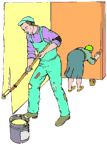 When a surface has been cleaned, painting that surface
should be considered, especially in areas where contamination was found or suspected. If
there is any remaining contamination that cleaning did not remove, painting the surface
puts a barrier between the contamination and anyone who may come in contact with those
surfaces. Even on those areas that people do not normally touch, painting will cover up
and "lock" the contamination onto the surface, reducing the chances that it
would be released into the air. When a surface has been cleaned, painting that surface
should be considered, especially in areas where contamination was found or suspected. If
there is any remaining contamination that cleaning did not remove, painting the surface
puts a barrier between the contamination and anyone who may come in contact with those
surfaces. Even on those areas that people do not normally touch, painting will cover up
and "lock" the contamination onto the surface, reducing the chances that it
would be released into the air.
Should testing be done after cleanup?
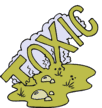 If, after cleaning your residence using the guidelines in this article, you
are concerned about any remaining contamination, or if your property still has an odor,
visible staining, or causes physical irritation to those exposed, it is advisable to have
the property evaluated and tested. Also, if you are concerned with liability issues, you
should consider having the property tested. If, after cleaning your residence using the guidelines in this article, you
are concerned about any remaining contamination, or if your property still has an odor,
visible staining, or causes physical irritation to those exposed, it is advisable to have
the property evaluated and tested. Also, if you are concerned with liability issues, you
should consider having the property tested. 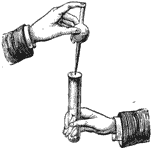 Sampling is an expensive option,
but may provide peace of mind for property owners and families. You may want to contact
your insurance carrier for advice and assistance. Sampling is an expensive option,
but may provide peace of mind for property owners and families. You may want to contact
your insurance carrier for advice and assistance.
No clean-up levels exist for many chemicals associated with meth
labs. A risk assessment may be necessary to evaluate the potential for exposure on a
case-by-case basis. A worst-case exposure scenario would be that of an infant or toddler
wearing as little as a diaper being exposed to chemicals by breathing, touching and
hand-to-mouth activity.
Until the former meth lab is cleaned up, no one should enter the
area without appropriate personal protective equipment. In addition, no one should
rent, purchase or occupy a former meth lab property unless cleanup has occurred.
Remember these steps to cleaning a former meth property:
- Determine if the property was used for meth production.
- Air out the property before and during cleanup.
- Remove all unnecessary items and dispose of them.
- Remove visibly contaminated items or items that have an odor.
- Clean all surfaces using household cleaning methods and proper
personal protection.
- Clean the ventilation system.
- Leave plumbing cleaning up to the experts.
- Air out the property for three to five days.
- If odor or staining remains, have your home evaluated by a
professional
See also Meth Residue Cleanup from the discussion board.
Additional sources to consider:
Methamphetamine Laboratories And Clean-up
Guide to Household Waste Disposal
Household
Hazardous Waste Project
Washington State Department
of Health Clean-up Guidelines
Newspaper articles about the problem for owners:
Meth Causing Problems for Real Estate Agents, Landlords
Two States
Tackle Lab Cleanup Problem
|
![]()
![]()